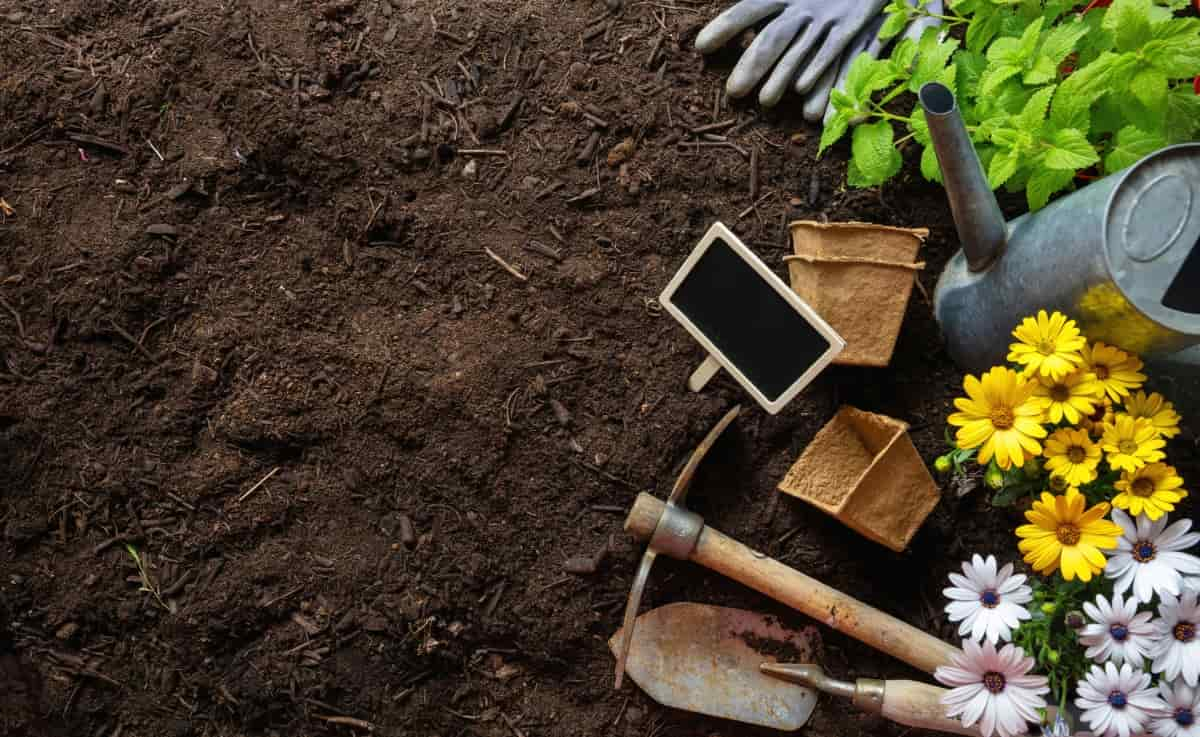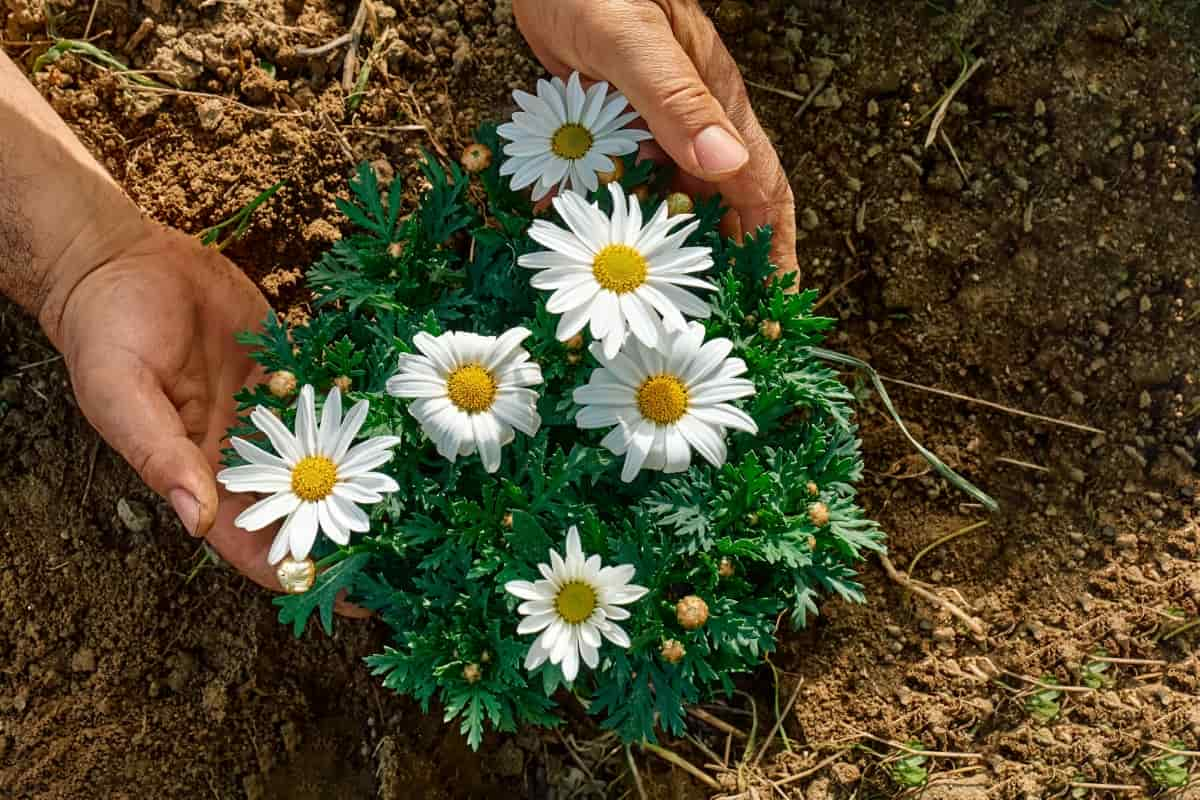A beautiful flower garden starts with good soil. Soil is the natural medium that supports plant growth, providing plants with the essential nutrients they need to thrive. Follow these simple steps to prepare the best soil for your flower garden.

How to Prepare the Best Soil for Your Flower Garden
Choose the Location and Clear the Area
The first step in preparing a flower garden bed is choosing the location. Make sure to select a place that gets plenty of sunlight and has good drainage. Avoid areas that are prone to flooding or have poor soil quality. Once you have chosen the location, it’s time to clear the area. Remove any grass, weeds, rocks, or debris that may be present in the area. This will help ensure that your flowers have plenty of room to grow and are not competing with other plants for nutrients.
Determine Your Soil Type
Determining your soil type is the first step in preparing the best soil for your flower garden. The soil type will determine the type of amendments you will need to add to your soil. There are three main soil types: sandy, clay, and loamy. Soil type affects your garden’s nutrient availability, drainage, and overall health.
To determine your soil type for a flower garden, there are a few methods that you can use. The first and most straightforward method is to do a visual and tactile examination of the soil. You can take a handful of soil and feel the texture to determine if it’s sandy, loamy, or clay. Sandy soil feels gritty and falls apart easily. Loamy soil is soft and crumbly, and it’s the ideal soil type for growing flowers. Clay soil is sticky, dense, and hard to break apart.
Determining pH Levels
Choosing plants that flourish in your soil’s pH is always the best option. The guidelines below can help you adjust the pH if necessary. Adding ground limestone to acidic soils will raise their pH. In nature, limestone is a soil sweetener, neutralizing overly acidic soils. To ensure that limestone dissolves and does its job, it’s best to add it in the fall.
Depending on the soil conditions, you will need to use different amounts of limestone. A simple home or professional test kit can determine the soil’s pH. If you randomly dump limestone on the soil, you risk overdosing. A soil test or the instructions on the limestone package should be followed.
Add cottonseed meal, sulfur, pine bark, compost, or pine needles to loamy soils to lower the alkalinity and increase fertility. As a result of these soil amendments, the soil gradually becomes acidic while improving its texture. As a soil test recommends, sulfur added to the soil is a reliable cure for garden ailments. As sulfur is converted into sulfuric acid and other compounds by microbes, the soil slowly becomes acidic.
Testing Drainage
Ensure your soil drains well by digging a hole, filling it with water, and watching how quickly it disappears. It tells you how fast moisture moves through the soil and whether the soil is likely to be excessively dry or extremely soggy, neither of which is ideal. In dry weather, dig several holes one foot deep and two feet wide after there hasn’t been any rain. Fill them up to the top with water and keep track of how long it takes to empty them. Based on your findings, compare them to the following scale:
- 1 to 12 minutes: Dry soil and sharp drainage are characteristics of the soil.
- 12 to 30 minutes: The soil has good drainage.
- 30 minutes to 4 hours: Slow drainage but sufficient for plants that thrive in moist soil.
- More than 4 hours: Poor drainage and needs help.
- If your soil works at its full potential, your plants will bloom at their best.
In case you missed it: How to Make Agniastra Organic Pesticide and Use for Garden Plants

Turn the Soil Over
You can turn the bed over after the vegetation has died using a tiller, spade, shovel, or garden fork. A brand-new bed may be difficult to break into the soil with a tiller, so turn it over with a spade or shovel first. It is best to work the soil when damp but not wet. When you turn it over, the soil will clump if it is too wet. It will be difficult to dig and harmful to the soil if it is too dry.
You should be able to break apart a spadeful of soil without sticking to your tools or dripping water if you turn it over. A tiller usually turns the soil 6 to 8 inches deep. Another reason to use a shovel when turning over a bed is that you should dig down at least 12 inches. If you are motivated, the soil should be turned over to a depth of 18 inches, although it will take a lot of effort. Often, this is called double digging.
Mix Compost into the Soil
Once the soil has been turned over, spread 2-3 inches of compost over the bed and mix it in. By adding compost to the soil, nutrients will be added, and soil structure will be improved. Compost and amendments with a sand-like consistency should be avoided, as they break down too rapidly. The chunks should be at least one inch, and the particles should be smaller. If you have a compost pile, use that material, or check with your local garden center. After that, level the soil by raking it.
Prepare Soil Beds
During heavy rainfall, soil beds allow water to drain from roots, allowing more air to enter the soil. Furthermore, soil beds allow you to easily apply compost or mulch to the areas where your plants’ roots grow. Additionally, they are easier to water, which makes irrigation more time-efficient. Even though raised beds look nice when arranged straight, this isn’t necessary.
To fit the shape of your land, you can build your garden beds in any direction as long as you keep at least 50-60 cm of distance between them. Planting seeds or seedlings can begin once you have prepared your plant beds. If you see any weeds popping up, remove them as soon as possible. Make a list of perennial and annual flowers you want to grow and decide whether to plant or buy seedlings. Take this into account when planning your garden.
Mulching Your Flower Bed
Make sure garden beds are mulched to keep weeds at bay and reduce the need for watering. W weed seeds are less likely to sprout when the soil surface is covered with enough mulch to keep it dark. Use fine-textured mulches like twice-shredded bark, compost, or cocoa hulls for maximum effectiveness with only a thin layer of mulch. To create an airy mulch, lay down thick layers of coarse-textured mulches like straw or bark chunks. Mulches with fine textures, such as grass clippings, should not be applied in thick layers, as they can mat down and smother the soil.
In case you missed it: How to Make and Use Brahmasthra Organic Pesticide for Your Garden Plants

Conclusion
Follow these simple steps to prepare the best soil for your flower garden and grow strong and healthy plants. I wish you happy gardening!
- Feed Your Flock for Less: Top 10 Tips to Save on Chicken Feed
- Ultimate Guide to Ossabaw Island Hog: Breeding, Raising, Diet, and Care
- Hatching Answers: The Top 10 Reasons Your Chickens Aren’t Laying Eggs
- Eggs and Economics: Breaking Down the Cost of Raising Backyard Chickens
- Defend Your Greens: Proven Methods to Keep Iguanas Out of Your Garden
- Ultimate Guide to Cinnamon Queen Chicken: A Comprehensive Guide for Beginners
- Ultimate Guide to California Tan Chicken: Breeding, Raising, Diet, Egg-Production and Care
- Ultimate Guide to Marsh Daisy Chicken: Breeding, Raising, Diet, and Care
- 10 Types of Chicken Farming Businesses You Can Start for Profits